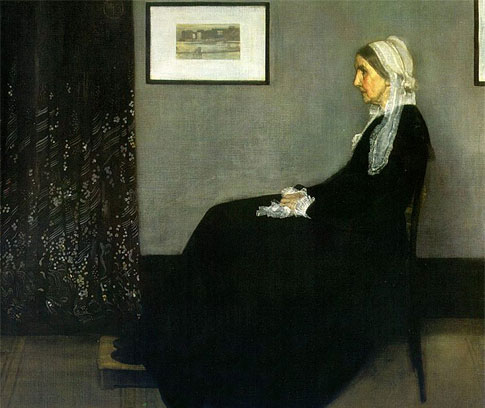Empire
 David Jacques Louis The oath of the Horatii Empire (French empire – the empire from the Latin. Imperium – command, power) – artistic style, created in France in the beginning of the XIX century, in the era of the empire of Napoleon Bonaparte. The chronological framework of the original French “Empire Style” is limited to a very short period of time: from the end of the reign of the Directory (1799) or the year of Napoleon’s coronation (1804) to the restoration of the Bourbon dynasty (1815). The main elements of the Empire, gleaned from ancient art, were already contained in the classicism of Louis XVI (Neoclassicism) and were crystallized in the “Directory style”. However, Empire style is fundamentally different from Classicism. Napoleon sought to shine and aura of glory of the Roman emperors. Therefore, the artists of the French Empire were strictly ordered to take the forms of art of Ancient Rome as the basis.
David Jacques Louis The oath of the Horatii Empire (French empire – the empire from the Latin. Imperium – command, power) – artistic style, created in France in the beginning of the XIX century, in the era of the empire of Napoleon Bonaparte. The chronological framework of the original French “Empire Style” is limited to a very short period of time: from the end of the reign of the Directory (1799) or the year of Napoleon’s coronation (1804) to the restoration of the Bourbon dynasty (1815). The main elements of the Empire, gleaned from ancient art, were already contained in the classicism of Louis XVI (Neoclassicism) and were crystallized in the “Directory style”. However, Empire style is fundamentally different from Classicism. Napoleon sought to shine and aura of glory of the Roman emperors. Therefore, the artists of the French Empire were strictly ordered to take the forms of art of Ancient Rome as the basis.
Empire style is tough and cold. P. Verlet defined it as the “hardened style of Louis XVI”. The decorative motifs of the Empire style consist mainly of elements of ancient Roman military equipment: legionary insignia with eagles, bundles of spears, shields, bundles of arrows, and speaker axes. Along with the Roman, you can see the motifs of Egyptian art. This is explained by the fact that even in the era of the late Roman empire, along with the ancient cults of Isis and Horus, the elements of ornamentation and sculpture of Ancient Egypt penetrated Rome. After the Egyptian campaign of Napoleon (1798-1799), Egyptian motifs became even more widespread in the art of the French Empire.
There are other differences between Ampir and Classicism. If in Classicism, the volumetric shape and decor are connected plastically and do not have clear boundaries, then in Ampir, the composition is usually built on a strong contrast between the clean surface of the wall surface, furniture, vessel and narrow ornamental belts in strictly designated areas that emphasize the constructive division of the shape. Classicism is characterized by soft, muted colors, for the Empire style, bright red, blue, white and gold.
It is noteworthy that the leading role in the formation of the new style belonged not to the architect, but to the painter Zh.L. To David. Even on the eve of the revolution, this artist in his paintings glorified heroic episodes from the history of ancient Rome: “The Oath of the Horatii” (1784), “Lie” (1789). The artist’s fame turned him into a court painter, and he glorified Napoleon’s military exploits in the same way as before the great Romans.
Characterized by another feature of the Empire. Its inherent regulation almost completely excluded the emergence of local national schools. Empire is essentially cosmopolitan. It is noteworthy that none of the countries defeated by Napoleon essentially adopted this style and only the only winning country Russia voluntarily exported the “style of the empire”.
In Europe, therefore, there were two varieties of Empire: French and Russian. The “Russian Empire” was somewhat softer than the French. It was also divided into two branches: the capital and the provincial. The embodiment of the capital, “St. Petersburg Empire” was K. Rossi, he softened the rigidity of the Napoleonic style with his Italian-Russian taste. The provincial Moscow Empire style and the style of nobleman estates near Moscow were distinguished by an even greater originality. Therefore, the terms “Russian Empire” or “Moscow Empire” can be taken only allegorically. In England, Empire style is also not widespread. The English Empire style is sometimes conditionally called the “George IV style” (1820-1830), which followed the English “regency style. Thus, terminological severity obliges to call Ampir only the artistic style of French art of the beginning of the XIX century.
The architecture of the Empire style is characterized by monumentality, geometric correctness of volumes and integrity (triumphal arches, columns, palaces). Parade palace interiors were richly decorated with picturesque panels, inspired by Pompeian paintings, reliefs resembling Egyptian sphinxes, vases, antique furniture and bronze.



